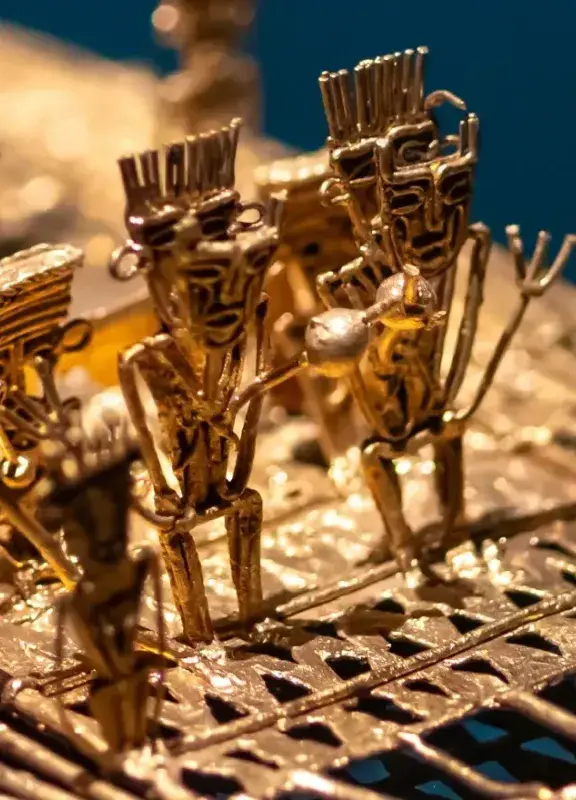Five mystical Colombian lakes you have to visit
Colombia is a country of myths and legends, full of stories and beliefs that have been passed down from its indigenous ancestors. Many of those ancient wisdoms focus on the country’s lakes and lagoons, which are also stunning natural spectacles. Here are five mystical Colombian lakes that are definitely worth a visit:
Lake Tota

Lake Tota, close to the city of Sogamoso, Boyacá, is Colombia’s largest natural lake and it was given its name by the ancient Muisca people, who considered it sacred. They believed the lake was home to the terrifying “Monster of Lake Tota” a huge black fish, bigger than a whale, with the head of a bull, which they also nicknamed the “Devil Whale”.
The lake’s name translates as the much more practical “Astronomic Observatory” and the Muisca believe their ancestors created it for just that purpose. Tota has an area of some 55km2 (around 12km long, 6km wide) and five little islands. The lake, around a four-hour drive from Bogota, is an important breeding ground for rare birds including the Bogota rail, Colombian ruddy duck and Apolinar’s Wren.
Green Lagoon

Narino’s stunning Laguna Verde is a sight to behold. Situated some 3,800m above sea level, the lake fills the sunken cone of the semi-active Azufral Volcano. It takes its vivid green color from iron and sulphur concentrations caused by volcanic activity.
The volcano is a thirty-minute drive from Tuquerres (a two-hour bus ride from Pasto) and most visitors hike for an hour-and-a-half to get there, past bonsai trees and rare lichens in an area filled with creeks and streams. Several lakes surround Azufral but la verde is the most beautiful. Legend has it the lagoon was formed from the tears of an indigenous man whose wife and son were taken by the Gods and if you stand by the lake, you can feel their warmth.
Lake Guatavita

Guatavita is the most famous lake in all Colombia thanks to the legend of El Dorado and the fact no fortune hunter has ever been able to drain it. Legend has it the Muisca people conducted a ritual there in which their leader, the Zipa (whom the conquistadores called El Dorado or “The Golden One”) covered himself in gold dust and threw himself in the water, along with gold, silver, jewels and other precious artifacts.
The belief intensified with the discovery of a gold raft nearby and other artifacts in the lake, in Sesquile, about an hour’s drive from Bogota. Fortunately it has proved impossible to drain Guatavita, which takes its name from the Muisca’s Chibcha language. Gwatibita means “high mountain peak”.
Lake Iguaque

Iguaque is another sacred Muisca lake and, according to those ancient indigenous people, it is the origin of all humankind. They believed the lake, in the paramo eco-system of Iguaque’s Flora and Fauna Sanctuary, a four-hour round-trip hike from Villa de Leyva, Boyaca, is where their goddess Bachue walked out of the water with a boy in her arms.
The pair then populated the Earth before they turned into snakes and disappeared under the surface. The lake is some 3,800m above sea level and is a popular hiking destination. Besides the charms of its waters, visitors enjoy hiking through the paramo, passing frailejon plants and all manner of ferns, lichens and spiky puya bromeliads.
Lake Calima

Lake Calima in Darien, Valle de Cauca, is the largest reservoir in all Colombia. It was designed to be the site of an important hydroelectric project but it is most loved because it’s Colombia’s epicenter for water and extreme sports. It has winds of up to 30 knots all year round, and balmy water temperatures, which make it ideal for kitesurfing and windsurfing with no wetsuit required.
Even though it’s artificial, this 70km2 lake has a mystical feel and, for more than a decade, 15,000 people traveled to its shores for an annual electronic music festival. Most visitors take the bus from Cali (2.5 hours) or the hour-long bus from Buga, to Darien then take a local bus or taxi to the lake. Mystical lakes full of myths and legends? Live this experience in Colombia.
 Welcome, you are in
Welcome, you are in 













